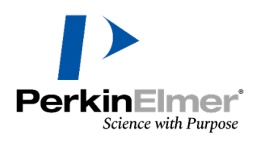方案详情文
智能文字提取功能测试中
多聚多巴胺遇见固态纳米孔:仿生完整表面化学调节纳流二极管功能性质Articlepubs.acs.org/JACS ArticleJournal of the American Chemical Society Polydopamine Meets Solid-State Nanopores: A BioinspiredIntegrative Surface Chemistry Approach To Tailor the FunctionalProperties of Nanofluidic Diodes Gonzalo Perez-Mitta, Jimena S. Tuninetti, Wolfgang Knoll,* Christina Trautmann,sMarfa Eugenia Toimil-Molares,and Omar Azzaroni*' Instituto de Investigaciones Fisicoqufmicas Teóricas y Aplicadas (INIFTA), Universidad Nacional de La Plata - CONICET, CC 16Suc. 4,(1900) La Plata, Argentina *Austrian Institute of Technology GmbH, Donau Strasse 1, Vienna, Austria SGSI Helmholtzzentrum fiir Schwerionenforschung GmbH, Darmstadt, Germany Supporting Information ABSTRACT: The ability to modulate the surface chemicalcharacteristics of solid-state nanopores is of great interest as itprovides the means to controlthe macroscopic response ofnanofluidic devices. For instance, controlling surfacecharge andpolarity of the pore walls is one of the most important applications ofsurface modification that is very relevant to attain accurate controlover the transport ofions through the nanofluidic architecture. In thiswork, we describe a new integrative chemical approach to fabricatenanofluidic diodes based on the self-polymerization of dopamine (PDOPA) on asymmetric track-etched nanopores. Our results demonstrate that PDOPA coating is not only a simple andeffective method to modify the inner surface of polymer nanopores fully compatible with the fabrication of nanofluidic devicesbut also a versatile platform for further integration of more complex molecules through different covalent chemistries and self-assembly processes. We adjusted the chemical modification strategy to obtain various configurations of the pore surface: (i)PDOPA layer was used as primer, precursor, or even responsive functional coating;(ii) PDOPA layer was used as a platform1ftoranchoring chemical functions via the Michael addition reaction; and (iii) PDOPA was used as a reactive layer inducing themetallization of the pore walls through the in situ reduction of metallic precursors present in solution. We believe that thetransversal concept of integrative surface chemistry offered by polydopamine in combination with the remarkablephysicalcharacteristics of asymmetric nanopores constitutes a new framework to design multifunctional nanofluidic devices employingsoft chemistry-based nanofunctionalization techniques. ■ INTRODUCTION The use of asymmetric solid-state nanopores to constructfunctional nanofluidic devices represents major research effortsin the rapidly developing area of nanofluidics. -4 Part of theappeal of nanofluidic diodes relies on their interesting ion-transport characteristics, which closely resemble the ionselectivity and ion current rectification properties of biologicalion channels.s.6 One of the key factors that determine therectifying characteristics of the asymmetric nanopores is thenanoscale control over the surface properties of the pore walls.Experimental and theoretical results have demonstrated thatthe rectifying properties of asymmetric nanopores emerge dueto a synergy of the entropic driving force caused by the channelasymmetry and the electrostatic effects due to the fixed chargeson the pore wall.10-12 During the past decade, increase inawareness and understanding of these factors that govern theresponsive behavior of nanopore devices gave rise to a broadvariety of nanofluidic architectures responding to externalstimuli such as pH,3 specific ions,“temperature,15 biomole-cules,6 electric field,"’pressure, 8 and light. The key element for these ionic nanoporous devices is the possibility oftriggering changes in the surface charge of the pore walls inthe presence of a given environmental stimulus, whichultimately leads to changes in the type of ions and theconcentration of ions inside the nanopore. Consequently,finding new avenues to manipulate the surface chemistry andthe nature of the fixed charges of asymmetric nanopores is ofparamount importance to gain control over the ion transportthrough the fluidic device and further expand the potentialitiesof these nanosized systems. During the past 2 decades, a number of macromolecular andsupramolecular techniques have been developed to modifysurfaces and confer them functional features, for example, layer-by-layer assembly, Langmuir-Blodgett deposition, and self-assembled monolayers. In spite of having been appliedsuccessfully to certain surfaces, all these techniques have acommon problem: they are not transferable to all types of ( R e ceive d : February 13, 2015 ) materials. Normally, these methods are restricted to surfaceswith certain characteristics. For example, the electrostatic self-assembly is restricted to surfaces that have a charge of adetermined sign or thiol chemistry is not compatible withpolymer surfaces. Because of this problem, there is a greatdemand for new approaches that lead toward more generalizedtechniques to functionalize surfaces. Consequently, devisingstrategies that enable the integration of different surfacechemistries in the same pore surface is one remaining challengein nanofluidic research. In this context, polydopaminederivatives seem to have attained l tthhiiss well-covetedgoal.Polydopamine, a polymer formed by 3,4-dihydroxy-L-phenyl-alanine(dopamine), is synthesizedspontaneously by anoxidative process. This process occurs under basic conditionsand in the presence of an oxidant and occurs both in solutionand over surfaces.. In 2007 Messersmith and co-workersproposed a number of ways to synthesize and use polydop-amine (PDOPA) to modify a large variety of surfaces, andthereafter it has been thoroughly studied by numerous groups. Despite the fact that the chemical composition of thePDOPA has not been fully elucidated, certain functional groupsare known to be present in the polymer, like catechol, imine,and amines. This is important because the chemistry of thesegroups makes it possible to modify further a layer of PDOPA toobtain surfaces with improved characteristics for specificapplications. A type of reaction that has been used to modifyPDOPA layers is the Michael addition, which allows graftingnucleophilic species such as primary amines and thiols to thepolymer.20-23 Moreover, another reaction that has been used inthis case to obtain metal-polymer hybrid materials is thereduction of metal ions during and after the polymerization ofthe PDOPA making use of the reactive catechol groups presentin the polymer.24,25 Although the PDOPA has been extensivelystudied in a broad variety of applications, the use of PDOPA asa "universal primer"to develop responsive nanofluidic devicesremains fully unexplored. Because of the versatility of thePDOPA to polymerize over virtually any surface and its ease tobe chemically modified, this polymer represents an idealbuilding block to be combined with nanofluidic devices toimprove the control over the transport phenomena. In a similar vein, another feature that previous works in thisfield have in common is the configuration of etched single ion-track nanopore dimensions and tip size through chemical-etching strategies. The irreversible nature of the etchingprotocol shows that nanopores need to be discarded if longeretching times result in too large pore diameters that do notexhibit good rectification properties. In this context, it would behighly desirable to develop a facile technique to modify notonly the chemistry but also the tip size and geometry ofnanopores after the construction. Herein, we report a new andversatile approach to confer multiple functional properties tosolid-state nanochannels by using self-polymerized dopamineunder different scenarios. We show that it is possible to obtainpH-responsive ionic diodes with enhanced rectification proper-ties from poorly rectifyingasymmetric nanochannels byexploiting the dimensional and surface chemical changes takingplace during PDOPA growth inside the pore. Moreover, wehave exploited the chemistry of PDOPA to tailor thenanochannel properties as a proof of concept of the feasibilityof the polymeric layer to develop fluidic nanodevices. To do so,we applied two different protocols. First, 3-aminobenzylaminewas chemically grafted to the PDOPA by means of a Michaeladdition reaction, and second, we have used the reactive catechol groups of the PDOPA to reduce gold to obtain ahybrid material constituted of PDOPA metallized with goldnanoparticles. Then the gold surface was subsequently modifiedwith thiolate self-assembled monolayers bearing quaternaryamino groups. MATERIALS AND METHODS Dopamine (DOPA), HAuCla, and 3-aminobenzylamine (ABA) werepurchased from Sigma-Aldrich (St. Louis)and used as received.Poly(ethyleneterephthalate) (PET) foils(Hostaphan RN12,Hoechst),12 um, were irradiated at GSI Helmholtzzentrum fiirSchwerionenforschung GmbH (Darmstadt, Germany) with swiftheavy ions (Au*2), having energy of ~2.2 GeV. For the surfactant-assisted etching, the anionic surfactant Dowfax 2A1 from DowChemical was used. The N,N,N-trimethyl(3-mercaptopropyl)-ammonium chloride was synthesized as described in the literature. Chemical Etching. PET foils irradiated with a single heavy ionwere etched using a surfactant-assisted technique which conferredthem a highly tapered “bullet-like" shape."7 This etching was carriedout in an electrochemical cell that separates both sides of the foil. Oneside of the cell was filled with etching solution, 6 M NaOH, while theother was filled with etching solution and surfactant, 6 M NaOH and0.04% Dowfax 2A1. Before the etching, foils were irradiated withultraviolet (UV) light for 2 h on the etching side only. The totaletching time was either 6.5 or 8.0 min at a temperature of 60 C,depending on the targeted rectification rate. There is considerablerectification at an etching time of 6.5 min, but then it decreases rapidlyat higher etching times. Conductivity Measurements. I-V characteristics were measuredusing a potentiostat, Reference 600 from Gamry, with a four-electrodesetup in which the current flows between the working electrode andthe counter electrode and the voltage is measured between two Ag/AgCl reference electrodes across the membrane. The potential is sweptbetween 1 and -1 V with a scan rate of 0.1 V/s and a step size of 0.01V. All the experiments were made using 0.1 M KCl solutions. Themeasurements at different pH values were performed without addingany buffer solution but adding dropwise solutions of HCl and NaOH.The counter electrode is always placed at the large opening base of thenanopore. Rectification Rate. To compare all the results, a rectification rate(frec) must be defined. frec is defined as the quotient between thecurrents at 1 and-1V.The current in the denominator is always theone with lower conductance. If the current in the nominator isnegative, the result is multiplied by -1 so that a positive rectificationrate is associated with a positive surface charge and a negativerectification with a negative surface charge. Polymerization of Dopamine (DOPA). A10 mM DOPAsolution was left in contact with the PET foil at pH 8.5 (adjustedwith 0.1 M Tris buffer) for 2 h. Potassium chloride was added up to aconcentration of 0.1 M to conduct conductivity measurements duringthe formation of the PDOPA on the nanochannel walls. Chemical Grafting of PDOPA. Using a Michael addition reaction,the PDOPA was modified with 3-aminobenzylamine (ABA).PDOPA nanochannels were left in a 2 mg/mL ABA solution for 72h (pH 8.5 was adjusted with 0.1 M Tris buffer). Electroless Preparation of Gold Coatings. Exposed catecholgroups of the PDOPA layer were used as reducing agents. PDOPA-modified PET foils were left overnight in a 5 mM HAuCly solution toobtain hybrid Au nanoparticle (NP)/PDOPA layer. To corroborateour procedure, we carried out two sets of experiments. First, UV-visspectroscopy was used to monitor the appearance of the typicalplasmonic features of gold NPs after the metallization step. Themeasurements were made using a Lambda 35 UV-vis spectrometerfrom Perkin-Elmer. Contact Angle Measurements. Contact angles were measuredusing a Rame-Hart contact angle system (Model 290) at 25 C. Ineach measurement, a 2 uL droplet of water was dispensed onto thesurface of the PET membrane. The average contact value was obtainedat seven different positions of the same membrane. The dual role of PDOPA as a building block capable of alteringthe chemical and dimensional properties of the nanopores wasdemonstrated using a nanochannel displaying scarce rectifica-tion properties as a consequence of the larger tip size obtainedafter prolonged etching timesS(8 min at 60 C). Aftercharacterizing the initial I-V response, the single pore-containing foil was washed with Milli-Q water and then putagain in the conductivity cell with a solution of dopamine inTris buffer (pH 8.5). The polymerization reaction startsimmediately under these conditions. To follow the closing ofthe pore tip during the polymer growth on the pore walls, thetransmembrane ionic current was measured as a function oftime(Figure 1). This experiment allowed us to roughly Figure 1. Transmembrane ionic current measured during theformation of the polydopamine layer on the nanochannel surface. Itis shown that the pore tip is not blocked even after 2 h ofpolymerization. estimate the effective radius of the nanochannel as thepolymerization proceeded inside the pore.This effective radiusRer is defined as the radius of a cylindrical pore having the sameconductance G as the measured nanochannel. The Reff wascalculated using a typical conductivity equation,29 where L is the length of the channel (in our case 12 um), G isthe conductance of the channel, and K is the specificconductance of the electrolyte. It can be seen in Figure 1that there is a rapid decrease in the Rer during the first 15 min.After this period, the polymerization rate within the poredecreased. The final regime lasted for more than 30 minwithout observing effective closure of the pore (Figure 1). Thesurface properties of PET films were examined before and afterdopamine polymerization by contact angle (CA) measure-ments. The results of the CA measurements showed that thePDOPA polymerization led to a visible change of the surfacewettability from 80° to 65° (see Supporting Information fordetails), thus indicating change in the surface chemicalcomposition. As expected, the I-V curve of the nanochannel after thepolymerization showed lower values of transmembrane ioniccurrents as a consequence of the reduced tip size resulting fromthe PDOPA growth. However, the nanochannel displays a marked increase in rectification rate (frec) from 2 to 10 after thePDOPA polymerization took place (Figure 2). A differencebetween the initial current in Figure 1 and the correspondingcurrent in Figure 2B can be seen. This difference was found tobe caused by the higher pH of the polymerization solution andalso by a slight shift between the potentials of the referenceelectrodes used during the polymerization. Up to date, the majority of the protocols to obtainnanofluidic diodes relied on bottom-up approaches in whichthe geometrical features that are responsible for the rectificationof the ionic current are obtained by strict control over thevariables during the fabrication of the channels. These variablesinclude the etching time, temperature, or the transmembranepotential.30-33]By using only this approach, it is almostimpossible to regain a non-ohmic, diode-like behavior aftercertain tip diameter of thee asymmetric nanochannel isexceeded. Here, we used a new approach using the self-polymerization of dopamine to occlude the nanochannel in avery controlled manner not only to reduce the size of thechannel but also to increase the rectification properties of thenanofluidic device. In this example, self-polymerization ofPDOPA permitted drastic reduction of the effective radius to20% of the original diameter, without blocking the passage ofions through the membrane. These results make the techniquevery attractive because it provides a protocol to obtainnanodevices from channels or pores of larger diameters.Theoretically, it should be possible to scale this procedure tochannels with diameters on the order of micrometers. Futurework will be done to elucidate this issue. Next, the responsive behavior of the PDOPA-modifiednanochannels as a function of pH was tested. Recently, Zhouand co-workers demonstrated that the presence of amine andphenolic hydroxyl groups confer PDOPA ampholytic orzwitterionic properties. With this idea in mind we exploredthe use of PDOPA as a zwitterionic layer capable of controllingthe nature of the surface charges on the pore walls, andtherefore the rectification of the nanochannel by adjusting thepH of the electrolyte solutions (Figure 3a). The behavior of thesystem was studied in the 2< pH< 12 range (Figure 3b).Within this range, the rectification varied from positive tonegative values, thus indicating variation from anion selectivityto cation selectivity (Figure 3c). When the I-V curves atdifferent pH values were measured, a region within the 4.5
-
1/7
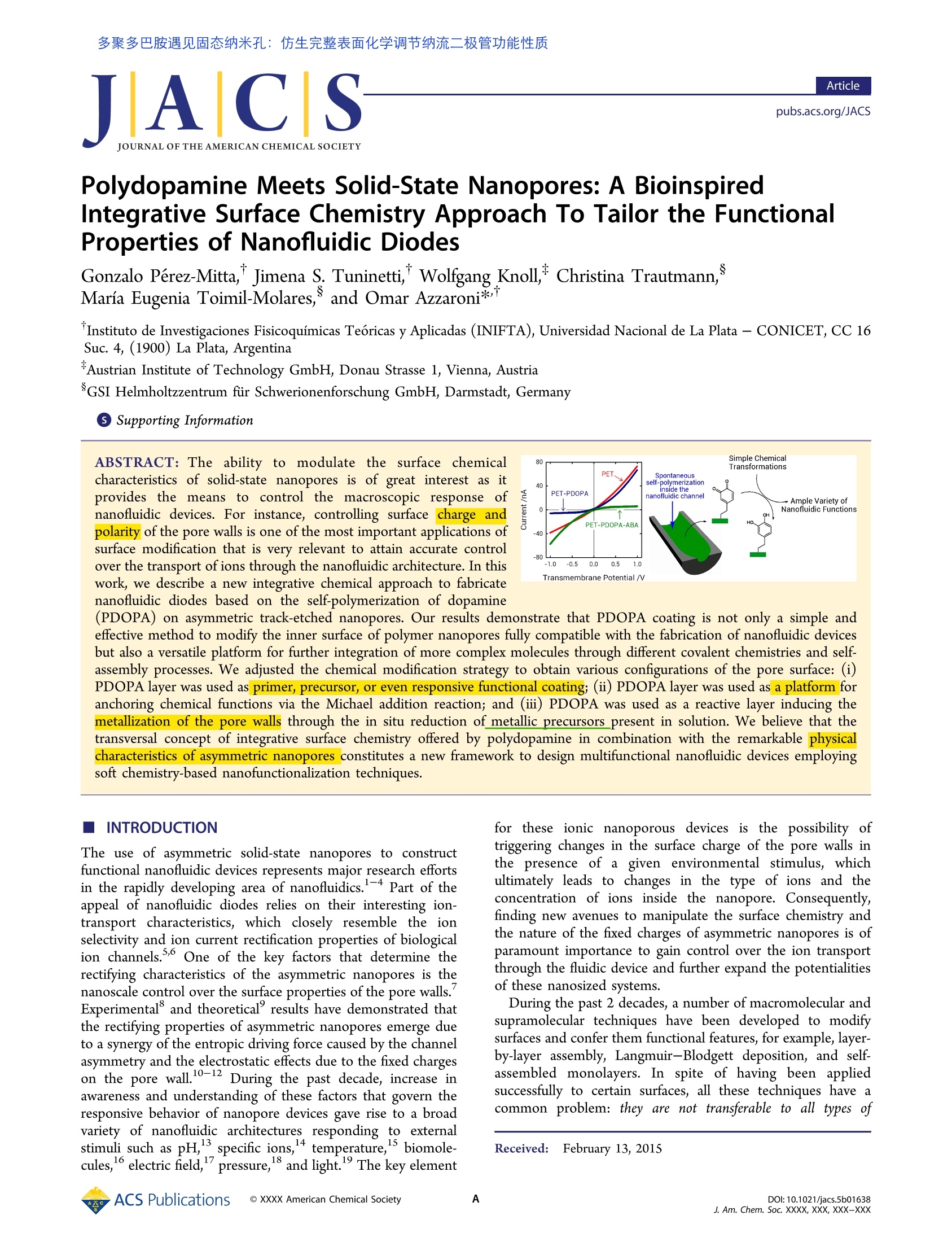
-
2/7

还剩5页未读,是否继续阅读?
继续免费阅读全文产品配置单
北京亿诚恒达科技有限公司为您提供《涂层中固态聚合物多聚多巴胺检测方案(电化学工作站)》,该方案主要用于涂料中固态聚合物多聚多巴胺检测,参考标准《暂无》,《涂层中固态聚合物多聚多巴胺检测方案(电化学工作站)》用到的仪器有电化学工作站Reference 600+。
我要纠错
推荐专场
相关方案


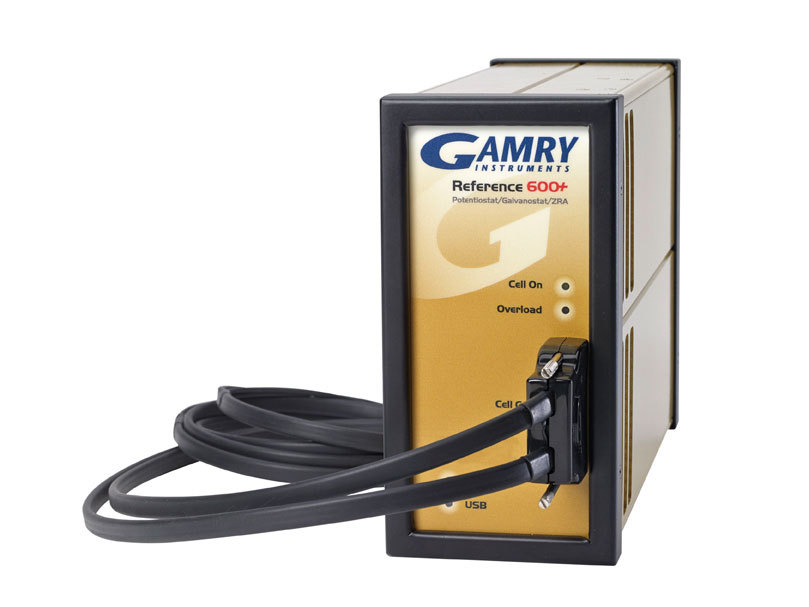
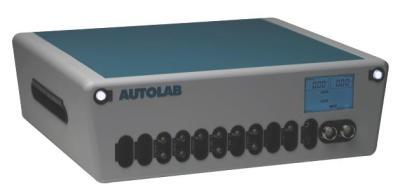
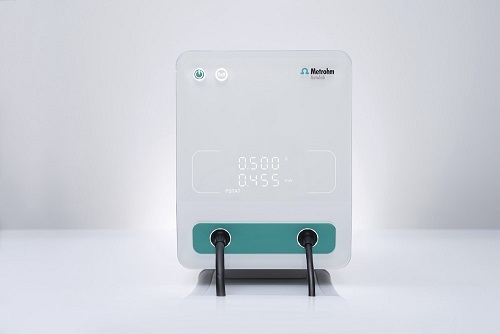

 咨询
咨询




